The Best RTX 2080 Graphics Cards in 2022
Updated: April 08,2022
In late 2018, Nvidia’s RTX graphics card series hit the market, and it was revolutionary in many ways. Relying on the breakout Turing architecture, this series was the first set of cards that came with support for ray tracing - hence the R in RTX - and fps-boosting DLSS technology. The series comprised the RTX 2060 and 2070 as the budget and mid-range pick of the litter, along with the RTX 2080, RTX 2080 Super, and RTX 2080 Ti cards.
However, some of the best RTX 2080 editions, like the 2080 Ti, were also the first cards to break the $1,000 threshold, heralding a new, pricey era for gamers. Games with ray tracing and DLSS were few and far between in 2018, but in 2022, multiple AAA titles support both technologies. Here, we’ve gathered and reviewed the top five RTX 2080 cards available to help you find the right fit for your gaming rig. Enjoy!
Asus ROG Strix GeForce RTX 2080 O8G Gaming
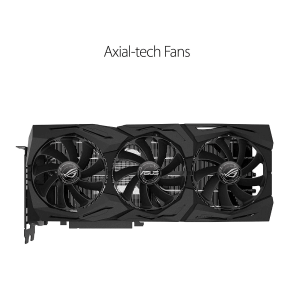
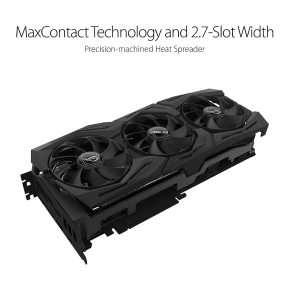
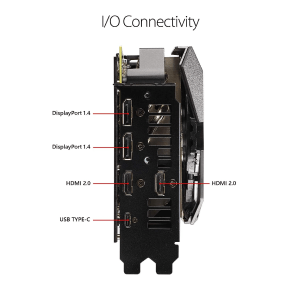
- Powerful cooling
- Great-looking RGB
- OC-mode clock-speed increase
- Dual BIOS switch
- Massive in size
Next to Nvidia itself, Asus’s ROG (Republic of Gamers) RTX 2080 is probably the best brand currently on the market. Over more than 30 years, Asus has built its reputation as a quality-first manufacturer that doesn’t resort to shortcuts in production. Here, we’re reviewing their RTX 2080 OC edition - one of the best non-Ti/Super cards.
Build and Performance
The first thing you’ll notice about this ROG card is just how big it is. Even mid-towers might have trouble housing its 300 mm x 131 mm frame. Newer graphics cards, in general, tend to be massive, but even for them, the ROG Strix is extreme. However, there’s a reason this GeForce graphics card is so large, and that reason is its superior sturdy design.
This candidate for the best RTX 2080 comes with a heavy metal backplate that greatly adds to the overall stability of the card’s build. The ROG Strix RTX 2080 hosts three cooling fans on the front - an evident advancement over the dual-fan design. It provides more cooling with less noise since increasing the number of fans reduces their individual workload. Triple fans currently provide practically the best air-cooling you can get.
There are RGB strips positioned above and below each fan, plus one more along the top edge with the ROG logo. As you’d expect from the best GeForce RTX 2080 cards, the lighting is controlled through an app - the famous Asus Aura. The card’s case is almost completely black, with a matte finish, and it’s equipped with top-class axial-tech fans with so-called wing blades. These fans have a smaller hub but larger blades and a barrier ring that increases downward air pressure.
The card has two HDMI ports, two DisplayPort connectors, and a virtual link connector for VR sets. There are two eight-pin PCIe plugs that amount to 375 W in potential power supply - a godsend for overclockers looking for the best RTX 2080 deals.
The ROG Strix RTX 2080’s boost clock speed is 1,860 MHz out of the box, while the base clock is 1,515 MHz. This is 60 MHz above the Founders Edition but still isn’t the quickest in the series. However, you can activate the OC mode using GPU Tweak II, which increases the boost-clock frequency to 1,890 MHz. The card comes with the Nvidia Turing TU104 GPU and 8 GB GDDR6 memory.
Another great addition is the dual BIOS switch for toggling between the Quiet and Performance modes. The fan curve is sharper with the latter, resulting in lower temperatures but increasing noise.
Performance-wise, this card is right behind the best RTX 2080 SUPER cards, averaging around 60 fps in 4K and ultra settings. However, in some open-world games like RDR2, it falls below 60 fps. The card’s ray-tracing performance brings the fps rate down by 10-15 frames, but it maintains stability.
Price
The card cost just under $900 on release. Now, it might set you back about $1,800. In most cases, this card is $100-$200 cheaper than the RTX 2080 Ti. Whether that performance jump justifies the price difference is up to you to decide.
Conclusion
This is probably one of the strongest RTX 2080 cards you can get your hands on, next to the best RTX 2080 Ti and Super cards. It’s a high-end card with top-of-the-line cooling, but awkwardly priced: It’s more expensive than some other, not much weaker models and barely more affordable than Ti cards, which can be significantly stronger.
Zotac Gaming GeForce RTX 2080 AMP
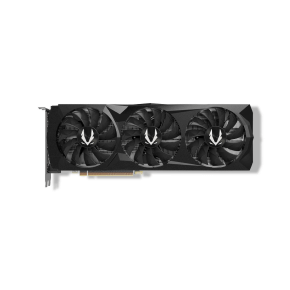
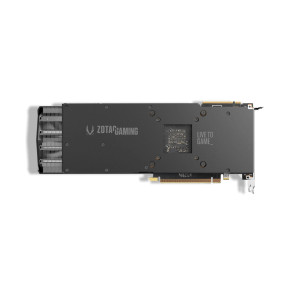
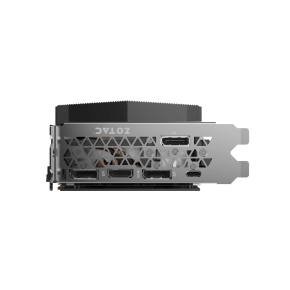
- Triple-fan axial cooling
- Less expensive than ROG Strix
- Full-metal backplate
- Sizeable factory overclock
- No RGB
The Zotac Gaming GeForce RTX 2080 AMP is an RTX 2080 best-buy option from the Hong Kong-based manufacturer. The company is one of Nvidia’s largest partners, and its affordable pricing and performance easily outmatch the Founders Edition cards. Like most aftermarket cards, its main strength lies in a sizable factory overclock and an efficient cooling system to support further power drives.
Build and Performance
In the past, Nvidia and AMD made reference graphics cards used by their partners to manufacture third-party GPUs. However, Nvidia departed from this tradition by selling the reference cards themselves as the Founders Edition series. Nvidia is now practically a competitor to its own partners, so most reviews compare partner-made cards with those from the Founders Edition. Our best 2080 video card reviews will follow the same logic.
The Zotac Gaming GeForce RTX 2080 AMP is one of the first RTX 2080 cards released to the aftermarket. It’s a pretty massive card, taking up 2.5 slots in the case and overshadowing the Founders Edition model, but it’s still slightly smaller than the 2.7-slot ROG Strix card.
Another similarity with the ROG Strix is the juiced-up cooling system. It utilizes triple axial fans for top-class, low-noise temperature maintenance. This highly effective system is on par with that of the best 2080 Ti RTX card, keeping your card cool through the heaviest workloads and giving you substantial leeway for overclocking. To fit all the fans and the heatsink required for those results, the card had to be enormous.
Users looking for a light show will be disappointed by the lack of RGB lighting. There are some LED elements, but that’s a poor replacement. However, if you don’t care too much about whether your machine is emitting pretty colors or you’re over the RGB craze, this won’t really matter.
The backplate on the card is full-metal: This is always great to see with an RTX 2080 on the cheap side, as it means the manufacturer didn’t skimp on quality materials. While the backplate serves no cooling purpose, the die-cast metal jacket covering its underside does. The fan shroud, on the other hand, is predominantly made of plastic.
Connection-wise, there are three 1.4 DisplayPorts, a USB-C Virtual Link connector for VR headsets, and an HDMI 2.0 connector. Your quad-monitor setup is good to go.
The Zotac Gaming GeForce RTX 2080 AMP has been factory-overclocked to 1,830 MHz. Sure, the best RTX 2080 models out there have higher clock speeds, but not at this price, and speed isn’t everything, anyway. Other components play an equally important part, such as the Video RAM: An 8 GB GDDR6 - the standard type and capacity for this series.
The main advantage of this card is how much leeway its excellent cooling gives you for overclocking. You can overclock it for approximately 100 MHz more, all the while maintaining safe GPU temperatures.
Running games at 4K Ultra settings will net you 50-65 fps, depending on the game, and you can expect the usual 10-15 fps drops with RTX on.
Price
This Zotac AMP model was one of the cheapest RTX 2080 cards at release, costing only $839. That’s just $40 more than the Founders Edition, but with added overclock potential and superb cooling. It’s currently out of stock everywhere, but you can expect the price to have gone over $1,500 by now.
Conclusion
All in all, we found the Zotac card to be a great budget choice among RTX 2080 cards. Thanks to its superb graphics card cooling system, it has the potential for significant and safe overclocking to speeds greater than those of the best Nvidia RTX 2080 from the Founders Edition. It’s definitely worth shelling out for.
Gigabyte GeForce RTX 2080 Ti Gaming OC 11G
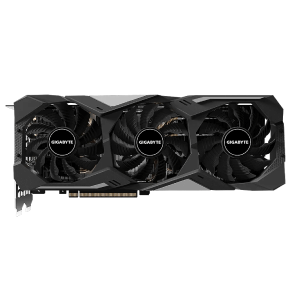
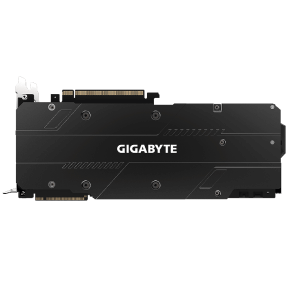
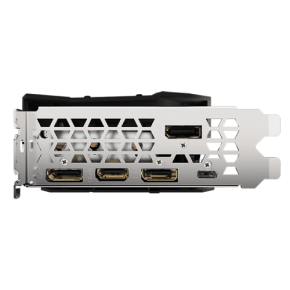
- The most powerful card in series
- Huge VRAM capacity
- Great boost clock speed for a Ti card
- Expensive
Now, we’re moving into the best RTX 2080 Ti territory. Before the GeForce RTX 30 generation was released, the Series-20 Ti cards were the pinnacle of GPU technology. The card we’ve decided to review is the Gigabyte GeForce RTX 2080 Ti Gaming OC 11G. This high-end graphics card hails from a brand whose reputation can only be matched by Asus and Nvidia itself. Equipped with impressive processing power, powerful Windforce cooling, and shiny RGB lightning, the RTX 2080 Ti from Gigabyte is the highest-quality card in this series.
Build and Performance
So how are the best GeForce RTX 2080 Ti cards different from the standard RTX 2080? Firstly, Ti cards have nearly 50% as many shader processors - 4,352 vs. 2,944. This amply offsets the significantly lower boost-clock speeds Ti cards operate at, which are around 1,545 MHz, compared to the 1,800+ MHz of regular 2080 cards. Secondly, a Ti card has more ray-tracing (68 vs. 46) and DLSS sampling cores (544 vs. 368).
The improved memory capacity - 11 GB GDDR6 compared to 8 GB - is a significant boost. All these features put together place Ti performance up to 30% above that of a regular card. The best GPU from the RTX 2080 Ti series at Gigabyte rocks a sturdy build, too, albeit somewhat visually unimaginative.
As expected from a high-tier RTX 2080 Ti card, the backplate is made entirely of metal. This is always great to see, as it adds to the card’s overall durability and stability. However, the design is fairly lacking since only the Gigabyte logo is visible, while everything else is just plain black.
Powerhouse graphics cards such as this require beefy cooling systems, and the Gigabyte GeForce RTX 2080 Ti Gaming OC 11G is no different. The card employs Windforce 3x cooling - a triple-fan system. Of course, for the price of the best RTX 2080 Ti from this brand, you really shouldn’t accept anything less than the strongest cooling solution, especially if you plan to overclock your card. Luckily, the Windforce system keeps the temperature in check thanks to three 82-mm fans and six composite copper heat pipes. Gigabyte applied its alternating-spin strategy here, so the fans don’t turn in the same direction, as that causes increased turbulence. Instead, the blades turn in opposite directions, ensuring smoother airflow, reducing turbulence, and improving heat dissipation.
Thankfully, compared to some of the best RTX 2080 cards we’ve reviewed, this one is not as big. However, it still takes up 2.5 slots. The card comes with RGB lighting, although it’s only positioned along the top edge, operating within the RGB Fusion 2.0 system.
In the outputs section, there are three 1.4 DisplayPorts, an HDMI 2.0b, and a USB-C outlet for VR headsets. Two PCIe eight-pin connectors can bring up the power supply levels to 375 W, keeping the card well taken care of even with extensive overclocking. The PCIe connectors will light up if there’s an abnormal power supply connected.
Like most aftermarket best-buy RTX 2080 Ti cards, this one comes with a factory overclock of 1,650 MHz, and activating the OC mode through the attached software can bring the speed up to 1,665 MHz.
This GPU works in 4K at 60 fps without a problem. For example, in Battlefield 1, with a 4K resolution and Ultra settings, it averaged 105 fps. The card also handles ray tracing well in GPU benchmarks, but be prepared for a significant fps drop with RTX on.
Price
This is definitely not the cheapest 2080 out there: On release, its price was around the $1,500 mark. Nowadays, it costs between $1,900 and $2,000 - if you can find one, that is.
Conclusion
There’s no doubt that this is an extremely powerful card that’ll set you up for the next couple of years of high-fps gaming. Its main drawback is that it doesn’t outperform the Nvidia RTX 2080 Founders Edition Ti by a big enough margin since Nvidia started overclocking its Founders Edition cards too. However, this one gets you RTX 2080 Ti performance with the addition of a stronger cooler, which in turn increases the overclocking potential beyond that of its reference card.
EVGA GeForce RTX 2080 Super FTW3 Hybrid Gaming
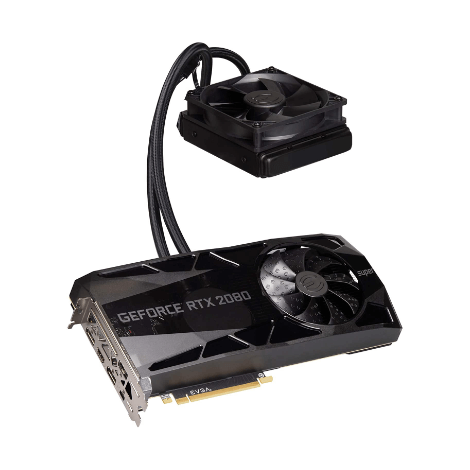
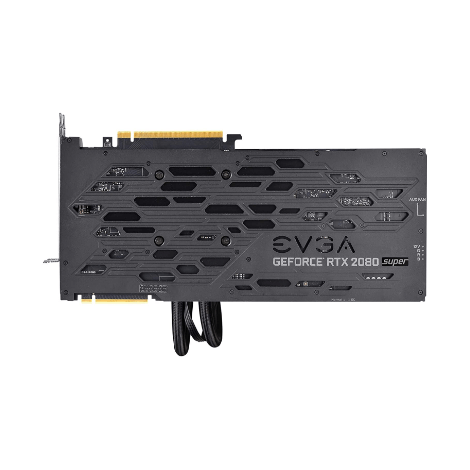
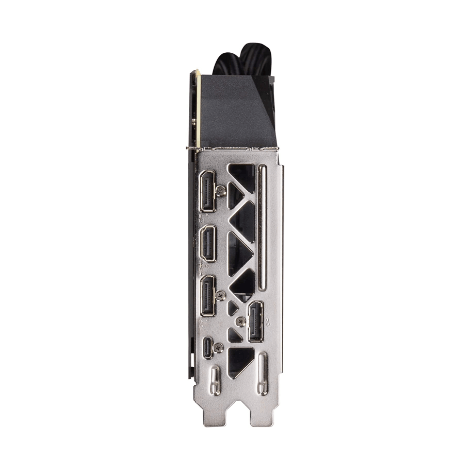
- Liquid-cooling solution
- Outperforms basic RTX 2080 cards
- Affordable for this series
- Beautiful visuals
- Fps drops with demanding games
After looking into the regular and Ti models, it’s time to pick out the best RTX 2080 Super card. Like the previous brands whose products we’ve covered here, EVGA produces high-quality Nvidia products, including both graphics cards and motherboards. The EVGA RTX 2080 Super FTW3’s main allure is the AIO water-cooling solution, but it’s also extremely strong in the performance department, thanks to its 1,845 MHz boost clock speed. Let’s see what’s under the hood.
Build and Performance
The creation of the Nvidia GeForce RTX 2080 Super is a prime example of Nvidia solving the problems it caused itself. The best 2080 Super card series was initially created as a response to AMD’s 5700 line, which included cards that could beat the RTX 2070 for a more affordable price. Nvidia then manufactured the RTX 2070 Super series, which outperformed the regular 2080 cards. Then, to salvage the 2080 line, Nvidia brought out the RTX 2080 Super edition.
The processing strength of the Super cards is right between standard RTX 2080s and their Ti counterparts. The performance boost Super cards bring comes from unlocking all the CUDA cores already present in the regular RTX 2080, which served to justify the RTX 2080 Super price bump. Additionally, the boost frequency was increased, and memory-clock speeds were increased to 15.5 Gbps from the original 14.
EVGA has several variants of the RTX 2080 Super card, with some rocking the triple-fan cooler. However, the Hybrid variant comes with AIO liquid cooling, keeping both the temperature and the card a size down. In fact, this compact build is the AIO system’s main advantage, as it removes the need for multiple fans and a heatsink.
The “Hybrid” portion in this best RTX 2080 Super card’s name stems from the fact that it also has air cooling for its VRAM via the card’s only fan. While the card is slightly taller than usual, it can fit into any mid-tower without a problem and won’t have you quaking in fear when closing the case.
This card’s backplate is also made of metal, and it looks beautiful overall, combining a glossy and matte finish on the black surface. One section of the front plate is transparent, revealing the PBS below. There aren’t many surprises with the best RTX 2080 single-fan model when it comes to outputs. There are three DisplayPort connectors, a USB-C for VR, and an HDMI port. Two eight-pin PCIe connectors are there for the power supply.
The boost clock speed here is 1,845 MHz. When comparing a 2080 vs. a 2080 Super card, the boost clock speed is lower than with some advanced models like the ROG Strix, but the increased number of CUDA cores more than makes up for it. VRAM is at 8 GB GDDR6, in line with the rest of the Super series.
Looking at RTX 2080 Super’s performance, this card easily achieves 60 fps in both 1440p and 4K-Ultra settings. Of course, it does tarry behind the flagship cards in any 2080 Super vs. 2080 Ti RTX comparison. Again, with some more demanding games like Metro Exodus, the fps might fall to about 50, but it’ll still provide a pretty smooth experience. If you want to play with RTX on, be prepared to make some concessions when it comes to graphic-quality presets. Through overclocking, you can safely get 90-100 MHz more from this card, as the AIO cooling solution has proved itself capable of handling the increased overclock temperatures.
Price
Even the RTX 2080 Ti best-buy options can’t beat this price. At release, the card cost about $800. Unfortunately, like all others, it’s currently twice as much.
Conclusion
The EVGA RTX 2080 Super FTW3 Hybrid Gaming outperforms all basic RTX 2080 versions, and it’s probably the cheapest card this powerful that incorporates AIO cooling.
Nvidia GeForce RTX 2080 Founders Edition
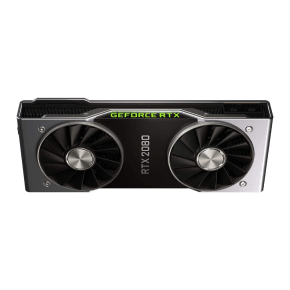
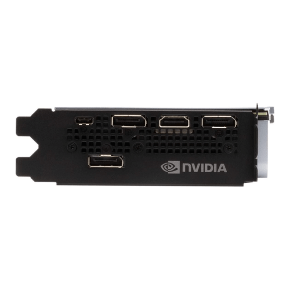
- Stunning visual design
- Mostly metal
- Massively outperforms GTX 1080
- Factory-overclocked
- Faster cards with better cooling are available
Finally, we’ve reviewed the golden standard against which all RTX 2080 performance is measured: the GeForce RTX 2080 Founders Edition offered by Nvidia. This metal-clad beast is used as the basis for modern GPU power comparisons. While third-party models might outperform it in terms of sheer power, we felt that the card that started it all deserves an honorable mention.
Build and Performance
The first thing you’ll notice about this card is just how gorgeous it is. Unlike some partner-made models, there’s very little plastic used here. With just one glance, you’ll understand why the FE 2080 price is near the $800 mark. The backplate is made completely out of silver metal, and so is the majority of the front panel for better cooling and a stylish appearance.
The dual axial fans are what truly sets this card apart from Nvidia’s previous reference versions. As a result, the RTX 2080 runs quieter and cooler, although it’s still hot to the touch under duress. Nothing to worry about, though - analysis software shows it handles the heat dissipation pretty well.
There are three DisplayPort connectors, a USB-C connector for VR headsets, an HDMI slot, and the NVLink connector. Unlike some of the best aftermarket RTX 2080 models, the Founders Edition has just one eight-pin PCIe connector, not two, plus a six-pin one. The dual-fan system saves up space, and the card takes up just two slots - something users with smaller PC cases will surely appreciate, as larger RTX 2080 models effectively take up three.
The RTX 2080 Founders Edition might seem underwhelming compared to RTX 2080 Ti and Super cards, especially since Nvidia has discontinued this card in favor of its Super edition. We’re including it, however, as it can still be purchased from partners and resellers for a lower price than most other models. Not to mention that the performance of the RTX 2080 FE is full of pleasant surprises: In another split with industry practice, Nvidia factory-overclocked this reference card. The Founders Edition boost-clock frequency is now at 1,800 MHz, compared to the 1,710 MHz on the basic reference model. The base clock speed remained the same - 1,515 MHz. Memory capacity is the usual 8 GB GDDR6, with 14 GHz of speed and 448 GB/s for bandwidth.
GPU benchmark results show it blows the GeForce GTX 1080 out of the water, but fps differences from the GTX 1080 Ti are significantly smaller. However, the TU104 board is still a performance beast, so when we made an Nvidia RTX 2080 performance comparison, only the RTX 2080 Ti was outperforming this card on release.
At 4K-Ultra settings and 1440p, the card has no issues in keeping the fps very high. While ray-tracing-capable games were absent when the card was released, there are plenty of titles to test it out now. Medium settings and RTX on get you a smooth experience, but upping the visuals to High cuts the fps down by nearly a half.
Price
While the promised release price for the RTX 2080 Founders Edition was about $700, it was closer to $800. Nonetheless, this was still the RTX 2080 with the best price on the market. The 75% performance increase from the previous generation more than justified the price hike. Unfortunately, it now costs about $1,700 on Newegg.
Conclusion
There’s no disputing that most RTX 2080 variants outperform the Founders Edition. However, if card prices ever get back to a semblance of normal, you could get it for $100 or so less than the Super editions and maintain excellent results. Plus, the card is easy to set up, much more compact and beautiful than most others, and you just can’t put a price on style.
Top RTX 2080 Graphics Cards to Buy in 2022
- Asus ROG Strix GeForce RTX 2080 O8G Gaming
- Zotac Gaming GeForce RTX 2080 AMP
- Gigabyte GeForce RTX 2080 Ti Gaming OC 11G
- EVGA RTX 2080 Super FTW3 Hybrid Gaming
- Nvidia GeForce RTX 2080 Founders Edition
Our Hardware Evaluation Methods for RTX 2080
There are dozens of 2080 graphics card manufacturers to choose from, so finding the best one among RTX 2080 cards is far from easy. You have to make sense of the convoluted naming conventions, as well as the various technical components making or breaking card performance. To aid prospective buyers, we’ll lay out the evaluation methodology we rely on in our graphics card reviews.
Cores and Clock Speed
The tricky thing when determining which RTX 2080 to buy, or when choosing graphics cards in general is that there’s no single metric you can compare across the board and see which contender is the best. However, in your search for the best RTX 2080 card, one of the first components you can compare is the number of cores and core clock speed. For Nvidia cards, the GPU computing units are called CUDA cores. They act similarly to the cores in your CPU, calculating what you need to render graphics. As the number of CUDA cores increases, so does the GPU’s performance.
It’s important to remember that core performance also depends on other factors, such as graphics card architecture. In this case, however, we’re reviewing cards with the same CUDA count, all powered by the Nvidia Turing architecture. What we can compare to find the best 2080 card is clock speed.
Clock speed determines the number of computations a core performs every second, measured in MHz. The clock frequency is not set in stone, either. There’s the base clock speed - the minimum stable frequency of a graphics card - and boost clock speed, which is the upper limit reached under duress - for example, when running a demanding game. For the RTX 2080, the base clock speed is usually 1,515 MHz, while the boost-clock frequency is generally between 1,700 and 1,860 MHz. When reviewing the best-buy RTX 2080 cards, people typically compare boost clock speeds as a measure of performance, and while this shouldn’t be the only metric used, it does showcase the card’s maximum power.
Memory
Graphics cards utilize Video RAM to store temporary visual data for the GPU to process and display. In recent years, video games have become increasingly VRAM-hungry, especially those featuring massive open worlds like Red Dead Redemption 2 or AC: Valhalla. Users with 1440p gaming in mind should pay special attention to a GPU’s VRAM capacity, as higher resolutions require much more temporary storage to be processed without stuttering.
Luckily, all the best Nvidia RTX 2080 cards use the ultraquick GDDR6 memory technology, processing at a rate of 14 GHz. The Nvidia GeForce RTX 2080 cards have a base VRAM capacity of 8 GB, but there are models with a larger VRAM out there, like the RTX 2080 Ti and Super. There’s not too much wisdom to VRAM capacities: In short, the more, the merrier.
Thermals and Noise Levels
Graphics cards, like most PC components, produce heat when they operate, especially during demanding tasks. The heat negatively impacts performance, so proper temperature maintenance is paramount.
Some models come with dual-, and others with triple-fan systems. The best RTX 2080 Ti models might even ship with AIO (all-in-one) liquid cooling solutions. Besides providing more efficient heat management, high-end options with triple fans are less noisy as well. While noise doesn’t affect performance, loud fan whirring becomes extremely annoying after a while.
Power Consumption
Besides running hotter, newer graphics cards also require more power, and power consumption is vital for two reasons: First, it determines whether your PSU can handle the load your GPU brings. There’s no worse scenario than getting the best RTX 2080 Ti card, only to find out that your existing PSU doesn’t have enough juice to support it. The other reason is efficiency, as power-hungry cards can run up your electrical bill over time; it would be wise to keep track of a card’s power consumption requirement.
Price
Now, we get to the interesting part - pricing. Anyone who tried to purchase high-end graphics cards last year, including the RTX 2080, is painfully aware of how difficult it is to obtain one. Their scarcity has led to massive price inflation. But why are the RTX 2080 prices so steep?
One of the major reasons is the renewed cryptocurrency craze. Miners using GPUs to mine cryptocurrency, predominantly Ether, have bought up massive amounts of new-generation graphics cards to use in their mining rigs. Turning from bad to worse, scalpers now utilize bots to instantly buy out any cards that appear in stock to resell them for a much higher price afterward. Lastly, the effect of the COVID-19 pandemic on global supply lines and the newly imposed tariffs on China, where the majority of new GeForce graphics cards are manufactured, also keep the best 2080 RTX card prices high.
Frequently Asked Questions
FAQ
The RTX 2080 Ti is definitely the card that offers the most power. However, if you want to stick to the basics, we recommend going with Asus’s ROG Strix.
Absolutely: In most cases, these cards achieve 60 fps in 4K Ultra, and while the RTX 30 series is more powerful, the RTX 2080 will keep your gaming rig up to date for a significantly lower price.
Thanks to an increased number of CUDA cores and superior boost frequencies, the RTX 2080 Super cards are better, and in some cases, even cheaper than the best RTX 2080.
With the release of the GeForce RTX 30 generation, 2080 cards stopped being “super high-end.” Still, they are extremely powerful cards reserved for the gaming elite.
RTX 2080 models are excellent choices for 4K gaming. However, if you want to play on Ultra and maintain 60 fps in all games, you might want to look into the Super and Ti editions.
Your email address will not be published.
![$row['title'] - image](https://trinity-core.s3.us-west-1.amazonaws.com/kommandotech/726/ASUS-ROG-Strix-GeForce-RTX-2080-O8G.png)
![$row['title'] - image](https://trinity-core.s3.us-west-1.amazonaws.com/kommandotech/710/ZOTAC-Gaming-GeForce-RTX-2080-AMP-front.png)
![$row['title'] - image](https://trinity-core.s3.us-west-1.amazonaws.com/kommandotech/711/GIGABYTE-GeForce-RTX-2080-Ti-Gaming-OC-11G-front.png)
![$row['title'] - image](https://trinity-core.s3.us-west-1.amazonaws.com/kommandotech/2158/EVGA-RTX-2080-SUPER-FTW3-HYBRID-GAMING-front.png)
![$row['title'] - image](https://trinity-core.s3.us-west-1.amazonaws.com/kommandotech/725/NVIDIA-GeForce-RTX-2080-Founders-Edition--front.png)